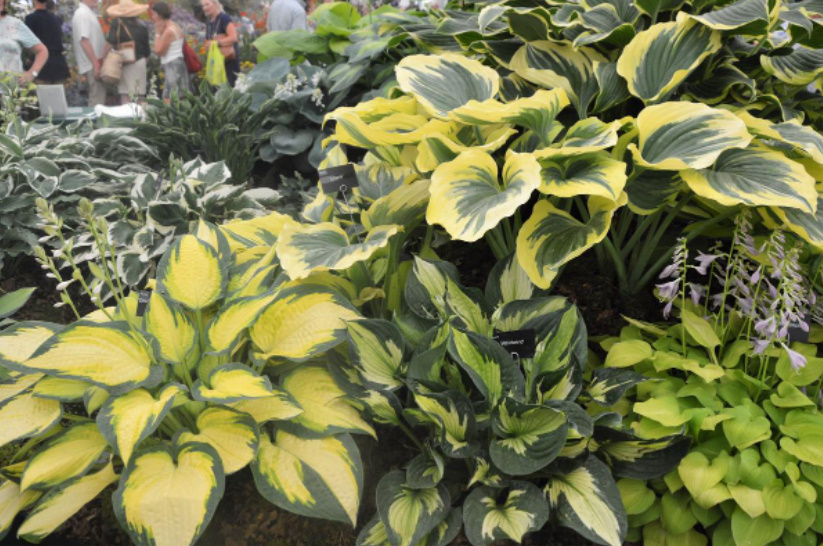
The circle of fans of hosta, this magnificent ornamental plant, is constantly expanding from year to year. And this is not surprising. A variety of varieties, a huge variability of shapes, sizes of the bush and the color of the leaves make the hosta indispensable in the landscape decoration of the garden. Unpretentiousness in care and durability have earned her a huge number of fans.
This wonderful plant, due to the simplicity of care and breeding, is also suitable for novice gardeners. However, when starting to collect the host, you should pay attention to some points. It would be useful for beginners to know that plants united under the common name of hybrid hosts are divided into a number of groups depending on the diameter and height of the bush, the color and texture of the leaves, the shape of the bush and the type of leaf plate. In this publication, we will consider the division of hosts by size, bush shape and leaf texture.
Size range
In height (or rather, in diameter), hosts are divided into 6 digits:
- G — giant, diameter 75-100 cm or more;
- L — large, diameter 50-70 cm;
- M — medium, 30-50 cm in diameter;
- S — small, diameter 17-30 cm;
- Min — miniature, from 7 to 16 cm in diameter;
- D — dwarf, diameter less than 7 cm.
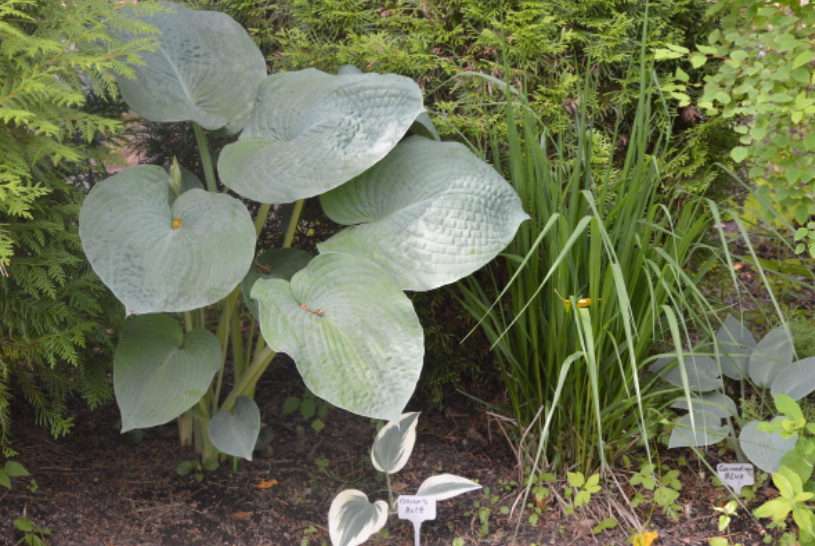
When choosing varieties, in no case neglect such information — its placement in the garden depends on the size of the hosts. It often happens that when planting, the dimensions of an adult plant are not taken into account, so later there is a need for transplanting if there is not enough space. And the main principle in cultivating hosts is not to bother them unnecessarily.
Large hosts
At the beginning of my journey, I planted a ‘Sum and Substance’ host without taking into account its impressive dimensions, and even that rhizome pruning the size of my thumb on my hand did not promise anything supernatural. At first, I even thought that I was a victim of deception. However, a few years have passed, and I have grown a truly gigantic plant, which had to look for a new, more suitable place. Transplanting huge hosts in their prime, when they reach the size of almost a bus wheel, is an almost impossible event. We have to dismember them into pieces to take them out of the ground.

- The list of host giants (G) includes the following: ‘Empress Wu’, ‘Sum and Substance’, ‘American Halo’, ‘Northern Exposure’, ‘Frances Williams’, ‘Earth Angel’, ‘Jurassic Park’.
Large hosts (L) are no less good, but they, unlike giant ones, are quite delicate and do not overwhelm the tribesmen with their greatness. If giant hosts are self-sufficient, and therefore they are usually planted as tapeworms, then representatives of group L are suitable for mixed plantings in shady corners of the garden.
- Among the popular varieties of L—format hosts are ‘Avocado’, ‘Brother Stefan’, ‘Pizzazz’, ‘City Lights’, ‘Kabitan’, ‘Guardian Angel’, ‘Niagara Falls’, ‘Golden Meadows’, ‘Liberty’, ‘Sagae’, ‘Great Expectations’, ‘Fragrance Bouquet’, ‘Dancing Queen’, ‘Inniswood’, ‘Color Festival’, ‘Dancing in the Rain’.
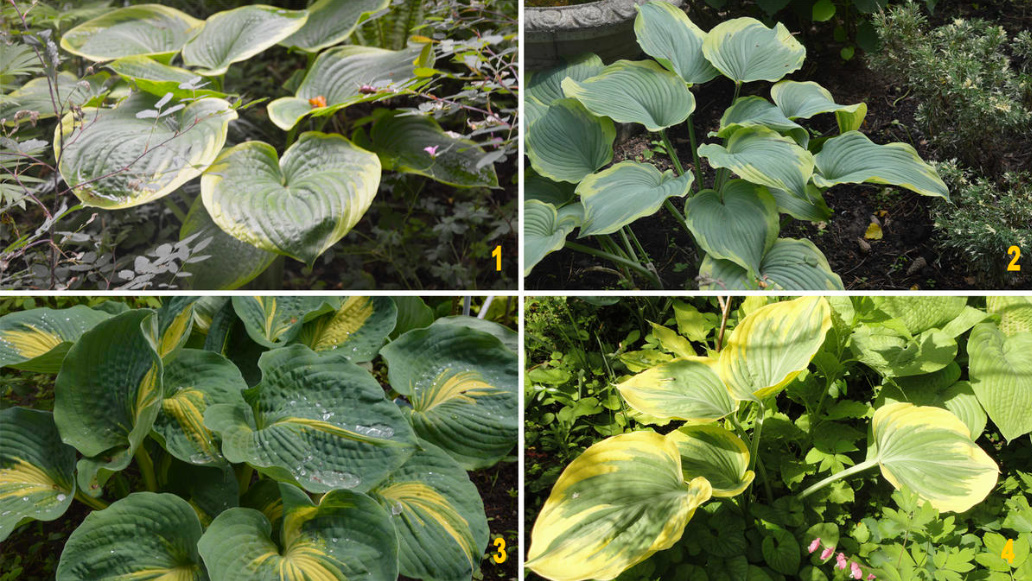
Giant and large hosts. 1. ‘Beach Boy’ (G). 2. ‘Earth Angel’ (L). 3. ‘Thunderbolt’ (L). 4. ‘Liberty’ (L)
Medium-sized hosts
The hosts of average parameters (M) are recognized as the most universal. They will be appropriate everywhere, they do not grow to an impressive size (like their more textured tribesmen), they are good both in mixborders and at reservoirs, and as a tapeworm they will not get lost in the garden.

Small Hosts
You should be very careful about choosing small (S) and especially miniature instances (Min), not to mention dwarf hosts (D). To be honest, they cannot play a big role in landscape design because of their modest size.
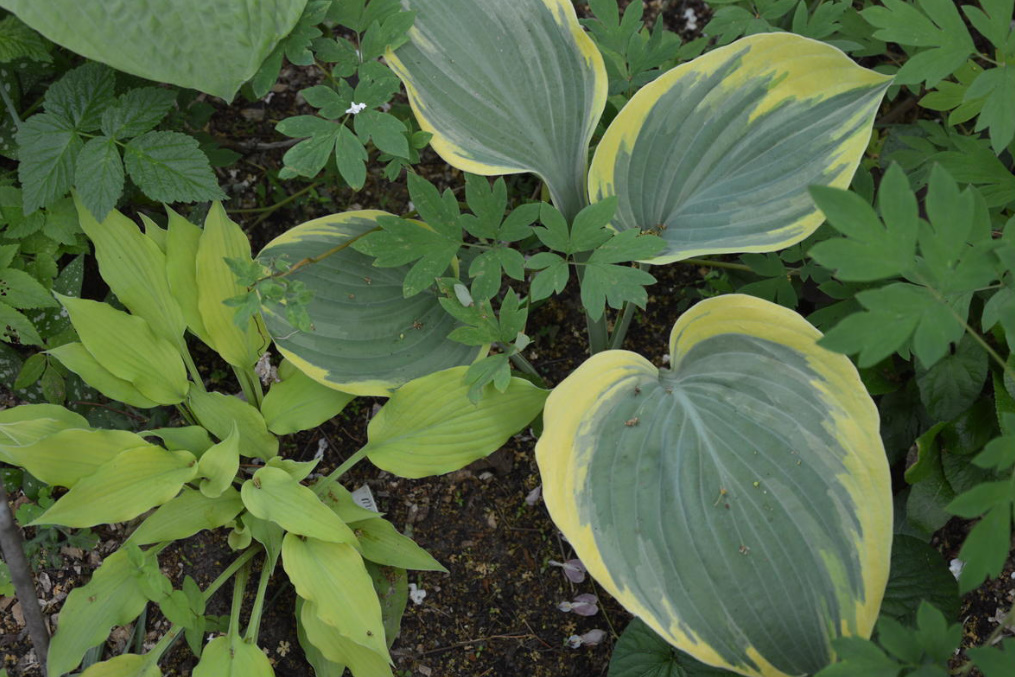
These are truly collectible hosts designed to please the eye and soul — a kind of little treasure that is nice to be proud of and brag about. First of all, they are dwarf hosts, tiny “toys” that, like any other miniature thing, cannot but touch and delight.
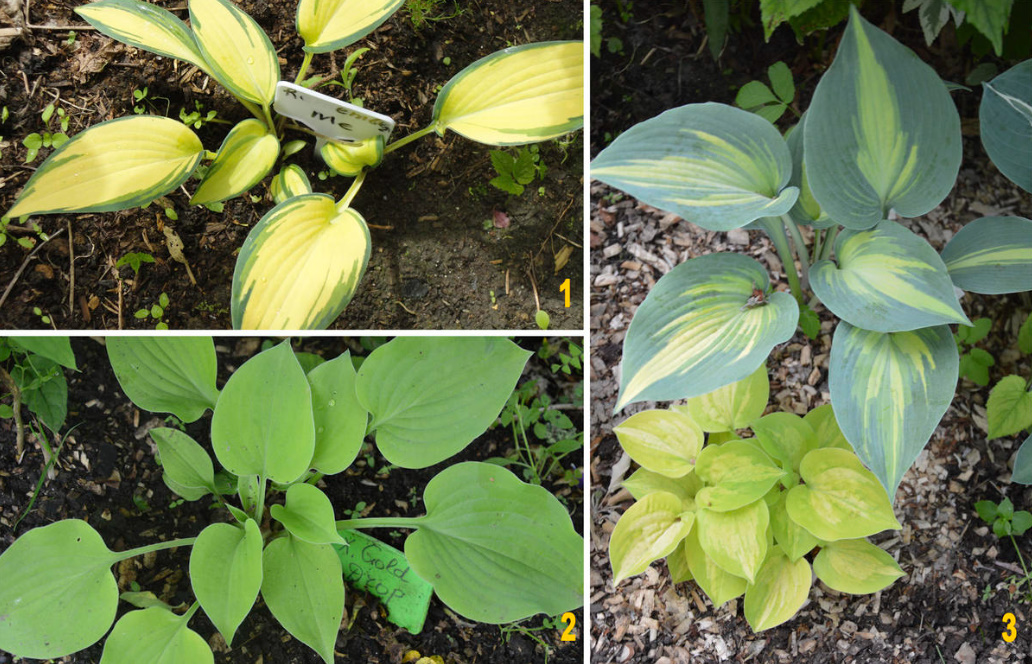
Small hosts. 1. ‘Remember Me’ (S). 2. ‘Gold Drop’ (S). 3. ‘June’ (M) and Baby ‘Silver Threads and Golden Needles’ (Min)
Among the host babies, a whole “mouse family” is known, the progenitor of which was a unique baby with the ingenious name ‘Blue Mouse Ears’. Its round leaves really resemble the ears of Mickey Mouse, the hero of Disney cartoons. Sometimes I want to touch them to feel the velvety.

The incredible commercial success of this variety has led to the creation of new varieties with similar characteristics. The list of “mice” is so large that they can be collected separately, especially if you don’t have much space in your garden.
What names have not been invented for them! There are ‘Snow Mouse’ with dense leaves with a white center and a blue-green border and ‘Green Mouse Ears’ — a dark green variety with thick elastic leaves and large purple flowers. In this row there are ‘Lucky Mouse’, ‘Holy Mouse Ears’, as well as ‘Church Mouse’, ‘Country Mouse’, ‘Dancing Mouse’, ‘Smiling Mouse’, ‘Sun Mouse’, ‘School Mouse’, ‘Desert Mouse’, ‘Mystic Mouse’.
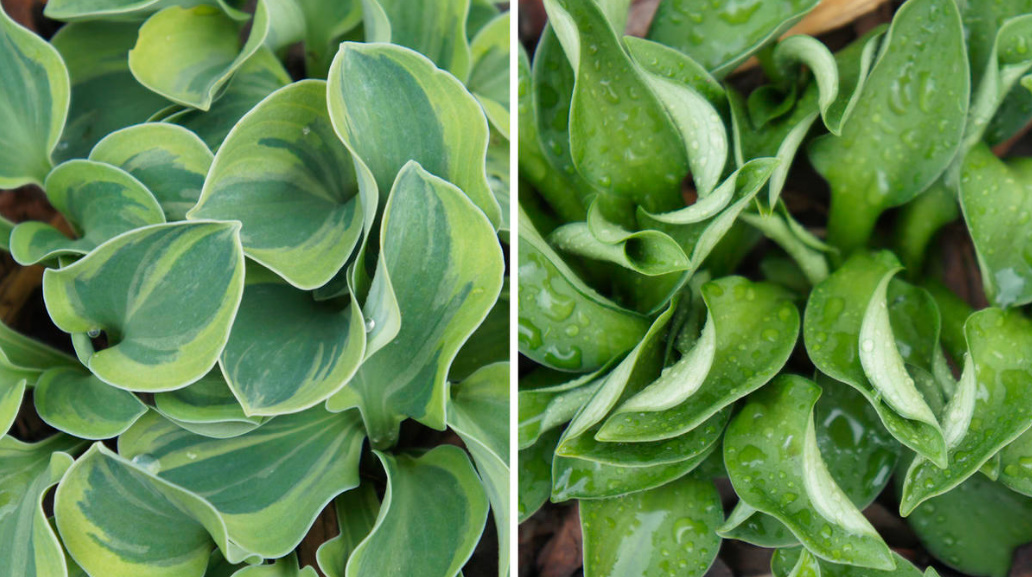
The breeders did not stop, and the imagination continued to prompt them with new original names. There were ‘Frosted Mouse Ears’ with green-blue round leaves with cream edging, ‘Monster Mouse’, ‘Mouse Cheese’ — all this magnificent offspring of ‘Blue Mouse Ears’. And ‘Sunny Mouse Ears’ became the first yellow-leaved host in this family. All these mouse relatives are united by two characteristic features — a small size and dense “silicone” leaves.
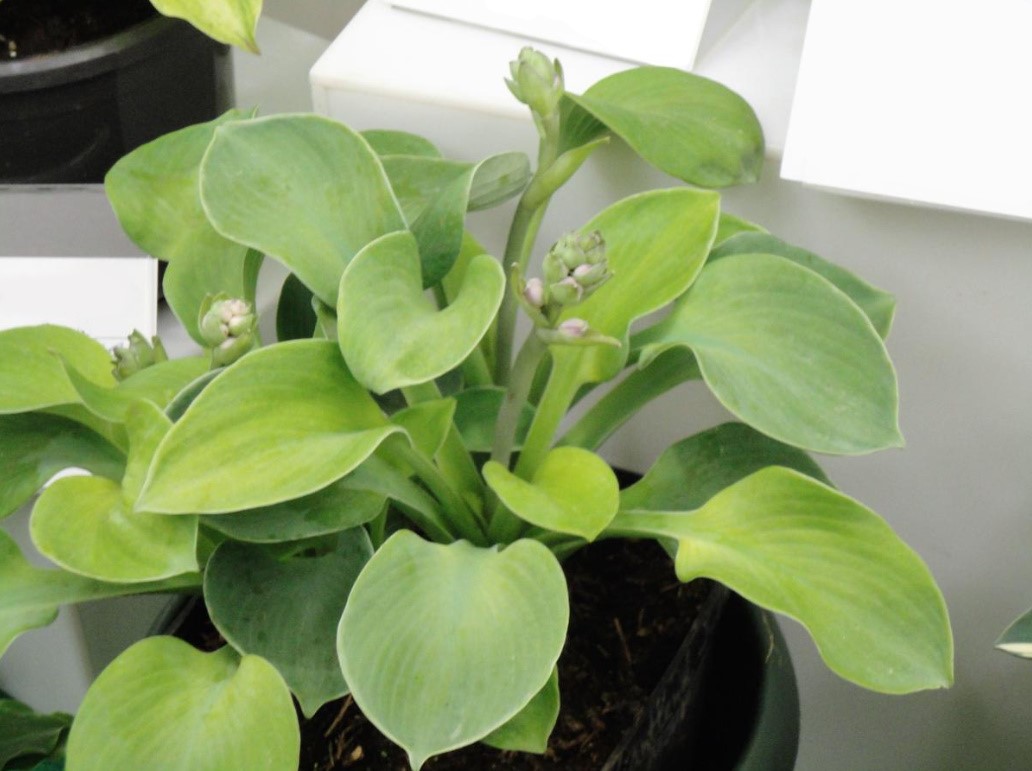
It should be emphasized that the above dimensional classification refers to hosts of six years (!) age: it is believed that it is at this point that they acquire their final dimensions. Therefore, do not be upset if at first the variety does not meet your expectations. Be patient, in a few years he will show himself in full glory and greatness.
Bush Shape
Only at first glance it may seem that all the host bushes have a wheel-shaped shape. This is far from the case. A vase-shaped one is also isolated when the leaves of the plant look up. The well-recognized ‘Krossa Regal’ has exactly this form of bush.
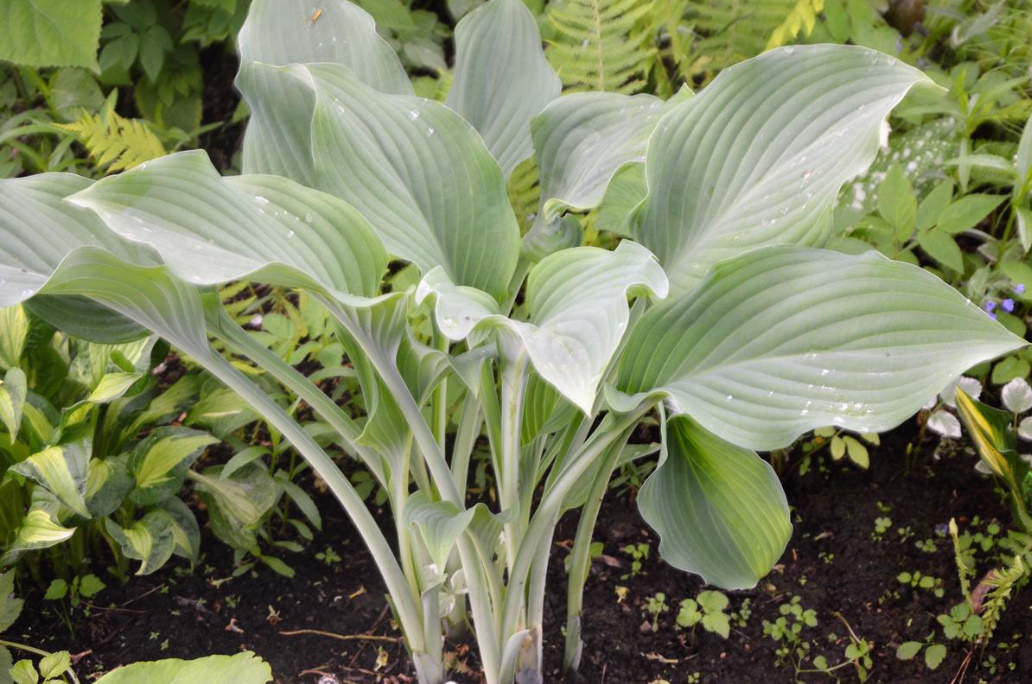
There are also fountain—like varieties – in this case, the leaves hang picturesquely, resembling the jets of a fountain. For example, as in the variety ‘Antioch’.

Vertically to the sky, as if folded in supplication, the leaves of an outstanding, completely unique hosta with the telling name ‘Praying Hands’ are directed.
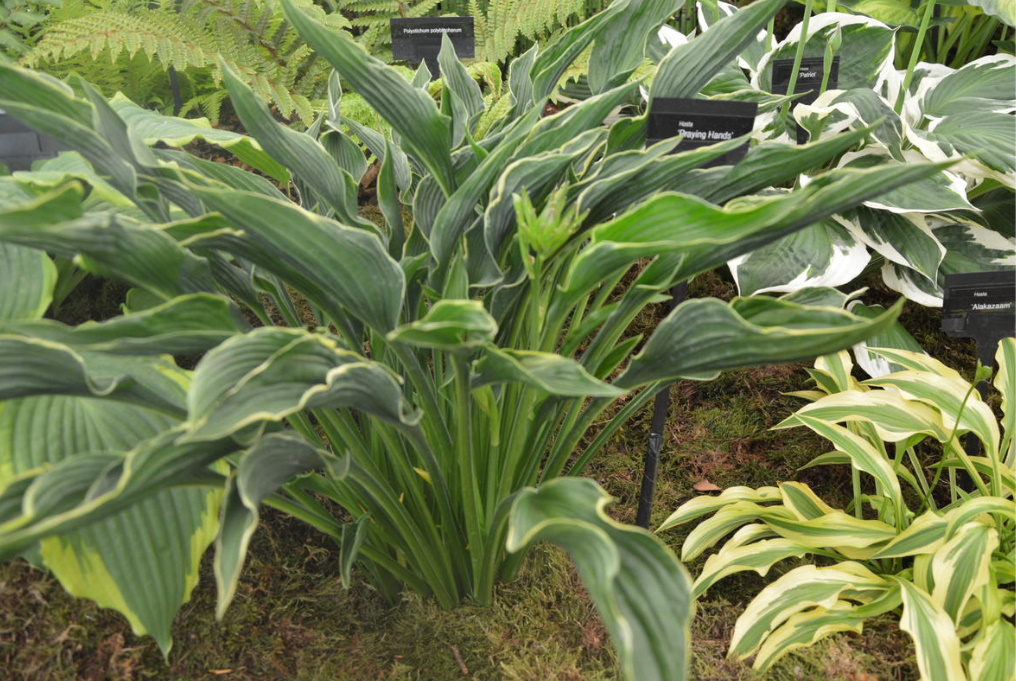
Some varieties have leaves arranged almost horizontally with respect to the ground (‘Gypsy Rose’, ‘Brim Cup’, ‘Gold Standard’). There are varieties whose bushes look like a star in terms (‘Medusa’, ‘Green Eyes’, ‘Calypso’).
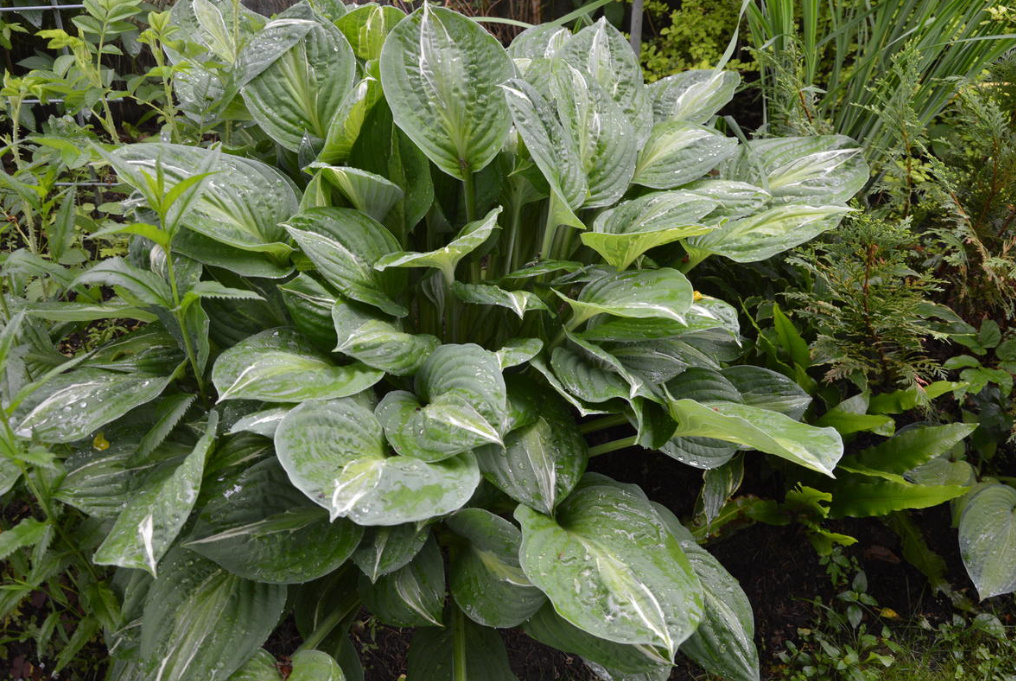
Texture and structure of the sheet
According to the invoice of the sheet, the hosts are divided into a number of groups. There are those whose leaves are distinguished by deep venation.

In others, they may be velvety, with a strong waxy coating (‘Blue Arrow’, ‘Halcyon’, ‘Canadian Blue’). Some have leaves with a shiny, as if varnished surface (‘Sugar and Spice’, ‘Shade Finale’, ‘Lakeside Looking Glass’, ‘Invincible’).
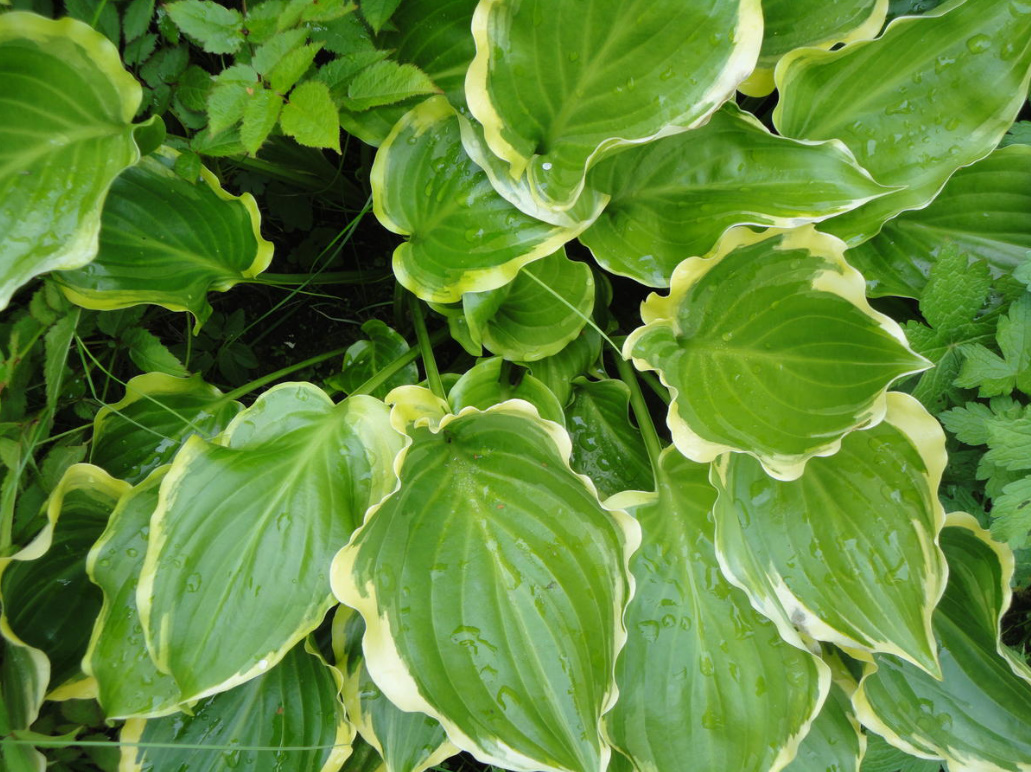
There is a waffle (pressed) texture of the sheet. The latter is sometimes compared to a toad’s back or even a crocodile’s skin, which is reflected in their name, for example ‘Alligator Alley’ — or ‘Alligator Shoes’.
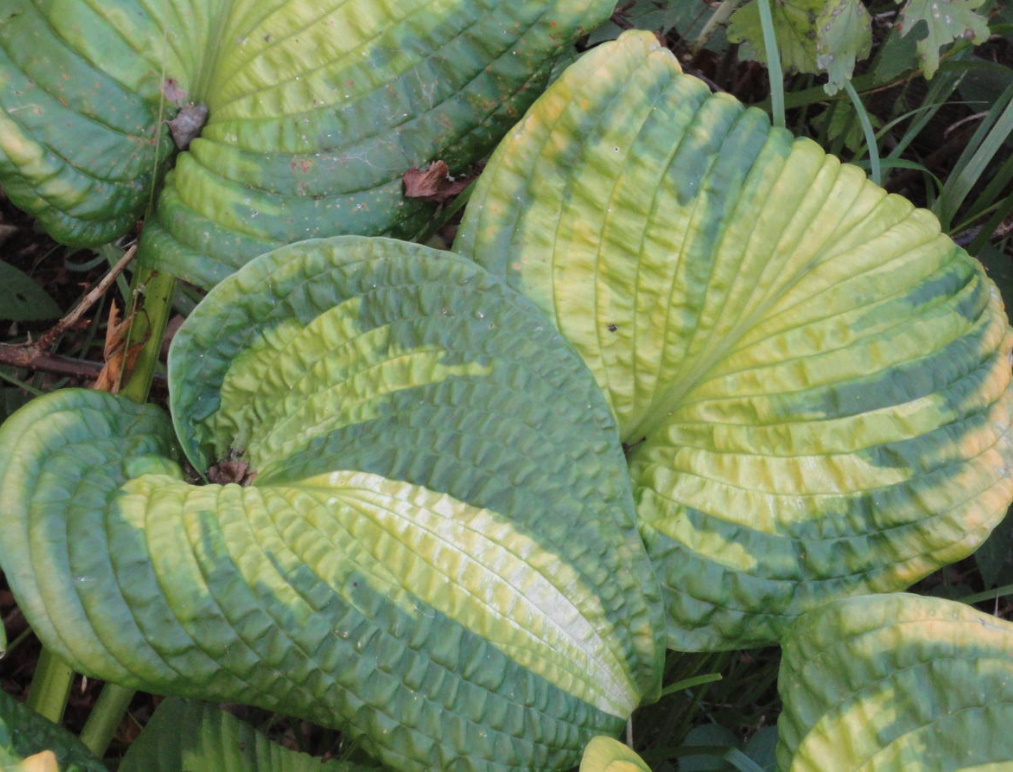
The structure of the leaves is also very diverse. They can be lanceolate, oval, ovoid, round, triangular, wedge-shaped, elliptical, heart-shaped, arrow-shaped, etc. For example, the hosts ‘Pizzazz’ leaves are almost round, similar to tortillas, which gave rise to the name.
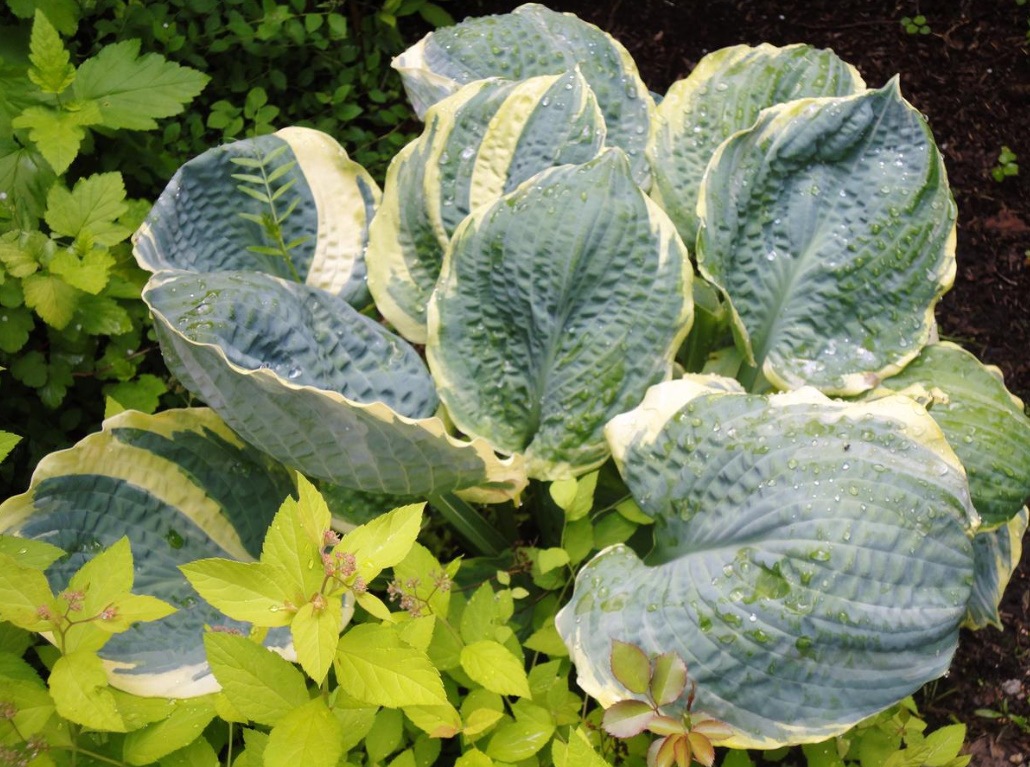
In some hosts, the leaf plates have a wavy edge, similar to a frill gathered on a thread, or an elongated pointed “spout”. There are varieties whose leaves resemble a bowl (‘Abiqua Drinking Gourd’, ‘Rainforest Sunrise’).
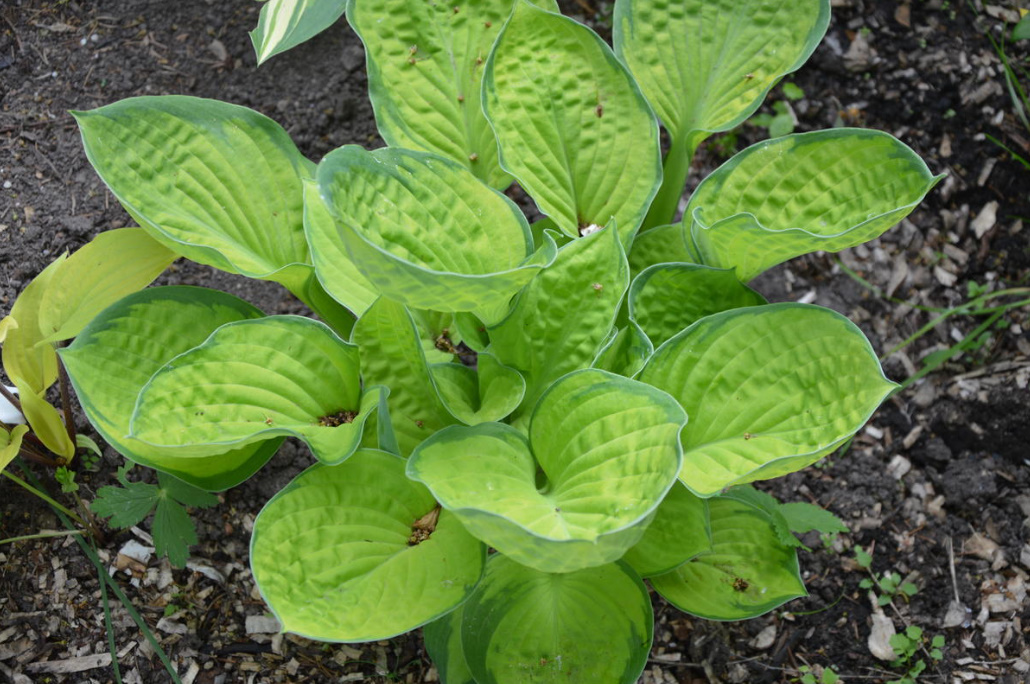
The baby ‘Teaspoon’ leaves on long petioles really resemble a teaspoon.

Among the latest innovations of the host, there are practically no petioles — with long and narrow leaf plates that grow directly from the center of the bush. The ratio of the length and width of the leaves is 6:1, and to top it off, they have a jagged edge, which served as the basis for the name ‘Hacksaw’. There were also “curly” hosts with leaves corrugated along the edge. Among them is the extraordinary beauty ‘Wheee!’, extremely elegant ‘Golden Meadows’, spectacular and memorable tricolor blue-gray ‘Guardian Angel’.

The host kingdom is incredibly diverse. Once you start breeding these wonderful plants, it will be simply impossible to say “Stop!” to yourself. However, it should be noted that hosts differ not only in the size and quality of the sheet plate. Coloring! That’s what else is important to know when choosing a host. The coloring of the leaves of this plant can be incredibly interesting.
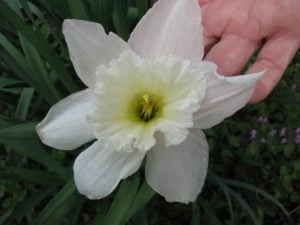


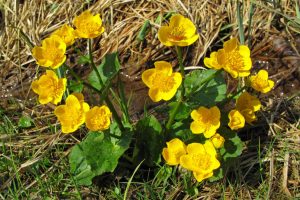
Leave a Reply